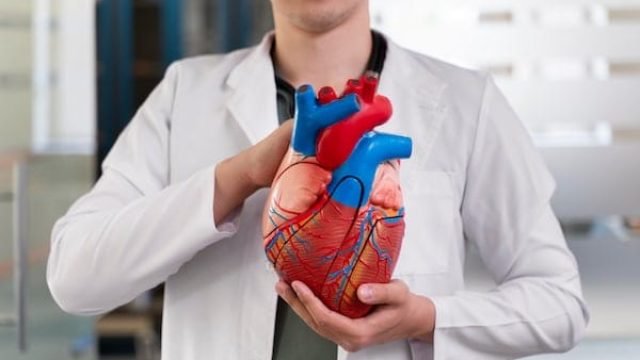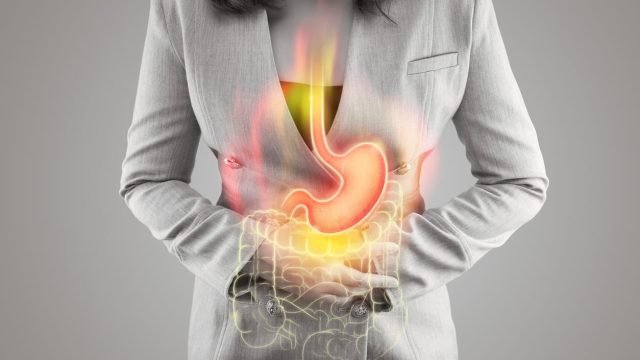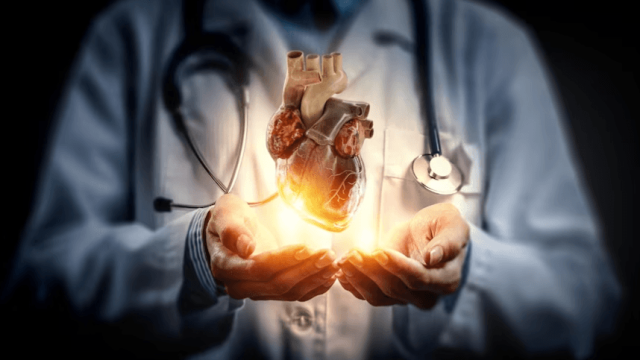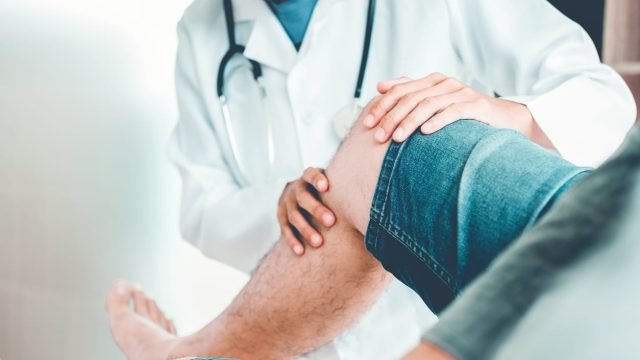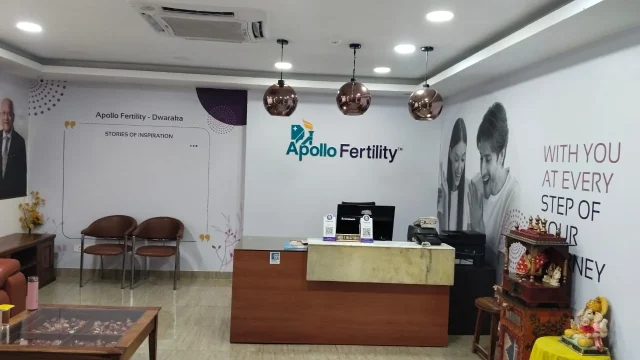Pancreatitis can be a serious condition and exceptionally painful when the pancreas is inflamed and prevents it from performing all these major functions that have involved in digestion and blood sugar regulation. This small yet vital organ produces digestive enzymes and hormones that control blood sugar levels. When these functions are cut off by inflammation, they lead to severe abdominal pain, nausea, and vomiting and may be increasingly life-threatening without prompt treatment.
Pancreatitis may develop suddenly (acute) or accumulate gradually over time (chronic). Being able to recognise emergency warning signs of acute pancreatitis is very important, as further prevention of severe complications so much depends upon early intervention. Intense upper abdominal pain that radiates to the back, fever, palpitation, and nausea that won’t go away are some of the symptoms that require immediate medical attention.
In this blog, we will discuss some of the most important signs of pancreatitis, when to seek emergency care, and some techniques that will give you relief.
Understanding Pancreatitis
There are two kinds of pancreatitis. An inflammation of the pancreas is said to be acute and chronic pancreatitis, which can be detrimental to health and requires immediate treatment to prevent complications.
Acute Pancreatitis
Acute pancreatitis is an acute and severe inflammation of the pancreas, which becomes rapid, most likely due to severe pain within the walls of the abdomen. This condition results from contributing factors such as gallstones, consumption of alcohol, infection, etc. It has devastating symptoms and sometimes jagged pain in the upper abdomen, radiating to the back, nausea and vomiting, fever, and rapid heartbeat. Acute pancreatitis may, in extreme cases, lead to life-threatening complications such as organ failure, septic infection, or internal bleeding, which may require urgent urgently to prevent damage.
Chronic Pancreatitis
Chronic pancreatitis is an age-old progressive disease that manifests in many times repeated painful episodes of pancreatic inflammation and results ultimately in irreversible damage. This results in failure to function properly, failure in enzyme production, and failure in the later stage of insulin secretion, resulting in malnutrition and diabetes.
There are multiple reasons for causing chronic pancreatitis: Disordered drinking behaviour, genetic conditions, or autoimmune diseases. The symptoms may include permanent abdominal pain, weight loss, diarrhea, or steatorrhea due to impaired activity of the breakdown of food.
Both forms of pancreatitis can greatly dent the quality of life in an individual, and thus, diagnosis and treatment should be prompt. Such conditions can bring about serious complications such as digestive problems, diabetes, or multi-organ failure in severe cases. The best treatment for behavior with pancreatitis would involve a medical approach, lifestyle changes, and dietary measures to prevent further episodes of inflammation and complications.
Emergency Signs of Pancreatitis
Realizing the emergency signs of pancreatitis is important for one to get prompt medical treatment. If untreated, the disease goes forward fast to complicated states and at times can result in life conditions. Here are some of the major warning signs to look out for:
Severe Abdominal Pain
The most alarming symptom of pancreatitis is intense pain in the upper abdomen, which is usually referred to the back. There may be an onset of the pain suddenly, and persistence later, anywhere from several hours to days. It may be aggravated by eating, especially fatty dishes, and is generally intolerable to most over-the-counter pain suppressants.
Nausea and Vomiting
Typical conditions of persistent nausea and repetitive vomiting are usually found in most patients suffering from pancreatic diseases. Sometimes it can be bile-stained or may contain greenish yellow, a color from the liver, because of the constant vomiting. If these symptoms are not addressed in time, they may also lead to dehydration of the body and a worsening picture overall.
Fever and Chills
Fever, associated with chills, could mean the inflamed organ is becoming more serious or even infected. It is an important red flag that needs to be evaluated by a doctor immediately.
Rapid Heart Rate
Generally speaking, high tachycardia is seen with acute pancreatitis. The main response of the organism to pain, loss of body fluid, and multiple organ dysfunction syndrome appears to be inflammatory.
Present Abdominal Tenderness and Swelling
Abdominal distension is well seen, inflamed or distended, where some tenderness to touch is felt, causing discomfort to pressure.
Yellowing of Skin and Eyes: Jaundice
Should pancreatic inflammation from gallstones or a bile duct obstruction occur, jaundice might follow suit. The yellowish staining of skin and sclerae results from increased bilirubin in the bloodstream. This is a potentially significant alarm requiring medical attention.
Breathing Difficulties
In way more severe states, further extension of inflammation from the pancreas may actually reach the lungs, impairing breathing or causing labored breathing. Reduced oxygenation of the blood renders this a grave emergency requiring prompt attention.
Shock and Low Blood Pressure
In the most extreme forms of pancreatitis, blood pressure may drop drastically and cause the patient to experience drowsiness, confusion, passing out, or unresponsiveness. Low blood pressure could be a signal for shock, which is life-threatening and needs to be seen instantly by a medical professional.
Seek immediate medical attention if any of the above is experienced by you or someone else. Pancreatitis may deteriorate within hours or days, with severe complications such as organ failure, infections, or internal bleeding beginning to occur. Early treatment will stabilize the condition, limit long-term damage, and improve recovery chances.
Quick Relief Tips for Pancreatitis Pain
Pancreatitis is one of the most serious medical ailments that result from inflammation occurring in the pancreas and which manifests as severe abdominal pain alongside complications. Such medical conditions generally require one to see the doctor and hospitalization, but there are definitely things that can be done at home to relieve symptoms before the time to see the health professional.
1. Stop Eating and Drinking
To give a pancreas its time by fasting is actually the most powerful pancreatitis pain alleviation method. Stopping food and drink consumption for a short while; this means depriving the pancreas of stimulation for that period. Fasting permits the inflamed organ to rest and size up since it does not produce enzymes now.
- Be sure to avoid all forms of solid and liquid substances except sips of the water.
- Also keep from fatty, greasy, or spicy foods as these will exacerbate the extent of the inflammation.
- Follow a advise of health care provider as to when to resume normal diet.
2. Drink Water
The symptoms of pancreatitis are aggravated with increases in dehydration-the very first thing to do is to ensure absolute hydration. Don’t drink a large quantity of water at once; rather, it must be sipped in small portions as below:
- Water
- Electrolyte solutions
- Herbal teas (such as ginger or chamomile, which might help to much nausea)
- Avoid all alcoholic, caffeinated, carbonated and sweetened drinks, since they aggravate and worsen the symptoms.
3. Cold Therapy
Cold therapy might give temporary relief from pain and inflammation for pancreatitis. Cold compresses on the abdomen may help relieve the temporarily occurring discomfort.
How to use a cold compress:
- Wrap ice pack in thin towel to prevent it from getting into direct contact with skin.
- Stick it in the upper abdomen for about 15 to 20 minutes at a time. Repeat as necessary with breaks between applications.
- Do not use a heating pad as heat would increase inflammation and worsen symptoms.
4. Take Over-the-Counter Pain Relievers
A minor pain can be soothed with these analgesics. These might include different kinds such as:
Paracetamol: Acetaminophen Use – This effective substance will alleviate pain ranging from mild to moderately painful and should not, however, be used in livers with liver disease.
Ibuprofen or naproxen: nonsteroidal anti-inflammatory drugs that reduce inflammation; however, high doses may irritate the stomach.
Precautionary Advice:
- Observe what the label recommends.
- Aspirin should be avoided because it can cause irritation of the stomach lining.
- Consult your physician before taking any pain medication while having underlying health condition.
5. Maintain a Comfortable Position
Your posture has a role in the pain you feel; certain positions may relieve the pressure on the pancreas while allowing the lungs to breathe more easily.
Here are other recommendations:
- Cuddle or curl up in a fetal position. It involves lying down on one side while bringing your knees up close to your chest.
- In a sitting position, you may lean slightly forward to relieve the pressure on your abdominal area.
- A pillow should be placed beneath your lower back to encourage a comfortable position while lying.
- Do not lie flat on your back; this would aggravate the pain.
6. Do Deep Breathing
Pain and stress form a vicious cycle, worsening symptoms of pancreatitis. Deep-breathing exercises relax the body and reduce the stress levels which may contribute to resolving some of the pain.
Simple breathing technique:
- Sit comfortably or lie down.
- Inhale through your nose for 4-5 seconds.
- Hold your breath momentarily.
- Exhale slowly through your mouth for 6-7 seconds.
- Repeat several times.
- This will oxygenate your body and provide relaxation, resulting in reduction of discomfort.
7. Quit Drinking and Smoking
Smoking and alcohol are the two most important risk factors for the development of pancreatitis, and they worsen the disease symptoms remarkably.
- Alcohol again leads to irritation of pancreas and then subsequently progress into increasing the levels of inflammation, making the symptoms worse.
- There is a related increase in the risks of chronic pancreatitis and pancreatic cancer due to smoking.
- Smokers and drinkers should completely avoid both substances when they suffer from pancreatitis. It is quite useful to seek medical help or support groups for quitting.
When to Visit Medical Health Care
These home remedies might have temporary relief from each one of them but finally bring you back to the professional treatment-the history of pancreatitis. It requires immediate medical attention if you have:
- Intense pain in the abdominal cavities that do not improve.
- Disability from vomiting or nausea while trying to hold any liquids down.
- Signs of fever or other infectious events.
- Yellowness in the skin (jaundice).
- Having a very rapid heartbeat or difficulty breathing.
Maybe, pancreatitis does develop too much of the complication because it’s untreated. Always consult a healthcare provider for the proper diagnosis and treatment. Thus by following these quick relief tips, help manage symptoms and lessen discomfort until professional medical care is available. However, proper treatment should be pursued, as pancreatitis is a serious condition, and cannot be taken lightly.
Long-term management and prevention of acute pancreatitis
Here are some lifestyle changes that may reduce the frequency of pancreatitis flare-ups and improve pancreatic health:
- Adopt a Low-Fat Diet: High-fat diets put a strain on the pancreas. Such diets must include lean sources of proteins along with fruits, vegetables, and whole grains.
- Hydration: Maintain a well-balanced water intake for proper functioning of the body’s digestive system.
- Alcohol Restriction: Complete restriction or limitation to the intake of alcohol.
- Quit Smoking: Smoking tends to result into chronic pancreatitis and in turn pancreatic carcinoma as well.
- Manage Comorbidities: Optimal treatment is offered for conditions like gallstones, hyperlipidaemias, and diabetes to cut back complications arising from them.
- Regular Medical Check-ups: A regular visit to the healthcare provider can identify risk factors earlier.
When to Seek Medical Attention
Emergency medical attention must be urgently sought for severe abdominal pains still not in the least relieved by medication or ongoing vomiting or jaundice or relative condition possible shock. Early intervention prevents complicated infection, failure of any organ and irreversible damage of the pancreas.
Conclusion
Pancreatitis is a grave condition wherein the life of an individual can be endangered if not treated immediately. Some temporary measures may help alleviate symptoms, but inviting professional medical help is inevitable for key diagnosis, treatment, and recovery in the long term. Early recognition of emergency signs that require prompt intervention can make a life-valuing difference to reduce complications.
Yours being an organ in a healthy body will significantly increase your well-being if you maintain a healthy lifestyle, avoid any known triggers like alcohol and smoking, and stick to medical advice. Don’t take it lightly when symptoms persist- your health is far too important to risk.

Dr. Mayank Agarwal – Gastroenterologist | Apollo Clinic Guwahati
You deserve better; let Apollo Clinic walk with you to a healthy tomorrow. 📞Call +91-9085612000 to book your appointment now.





